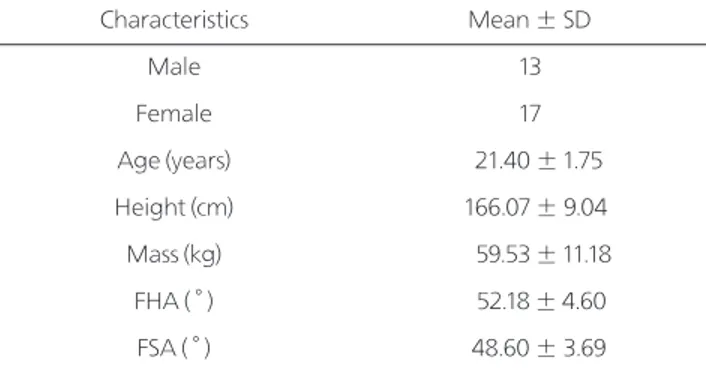The Effect of Different Head Positions in Sitting on Head/Shoulder Posture and Muscle Activity
앉은 자세에서 머리 위치가 머리/어깨의 자세와 근활성도에 미치는 영향
Purpose: This study was to investigate whether the two different head postures, natural and ideal head posture, affect head/shoulder posture and muscle activity.
Methods: Thirty healthy subjects with the forward head and round shoulder posture were participated in this study. This study utilized a within-subjects design with subjects being positioned into two sitting positions: natural head posture (NHP) and ideal head posture (IHP). Forward head angle (FHA) and forward shoulder angle (FSA) of each subject were measured for assessing the head/shoulder posture and muscle activities of upper trapezius (UT), lower trapezius (LT), and serratus anterior (SA) during the forward overhead reaching.
Results: There were significant increases in both FHA and FSA after taking IHP, which showed greater angles than in taking NHP. In change of muscle activities, there were significant decreases in both LT and SA after taking IHP, which showed lower activities than in taking a NHP, whereas there was no significant change in UT.
Conclusion: These findings demonstrate that postural alterations associated with forward head and rounded shoulder postures could alter scapular kinetics and muscle activity during the forward overhead reaching.
Keywords: Head position, Muscle activity, Shoulder
Jung-Won Kwon
1, Seok-Hyun Nam
1, Yong-Won Choi
1, Chung-Sun Kim
21
Department of Rehabilitation Science, Graduate School, Daegu University,
2
Department of Physical Therapy, College of Rehabilitation Science, Daegu University
권중원
1
, 남석현1
, 최용원1
, 김중선2
1


